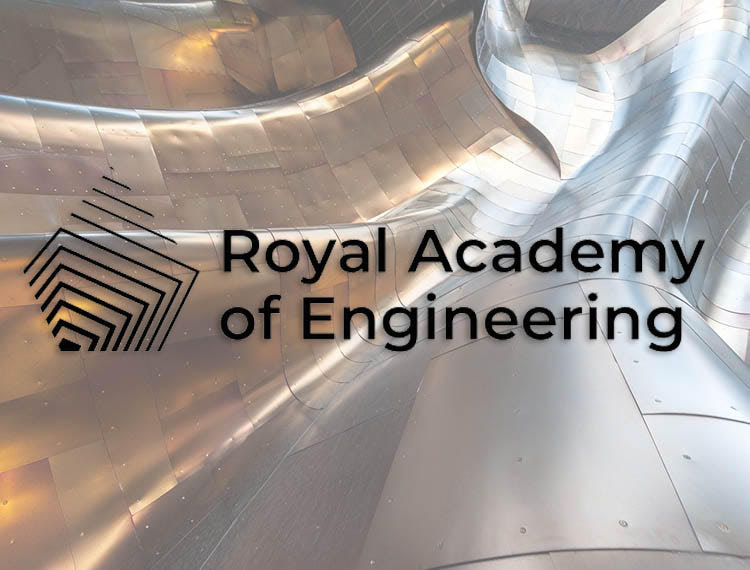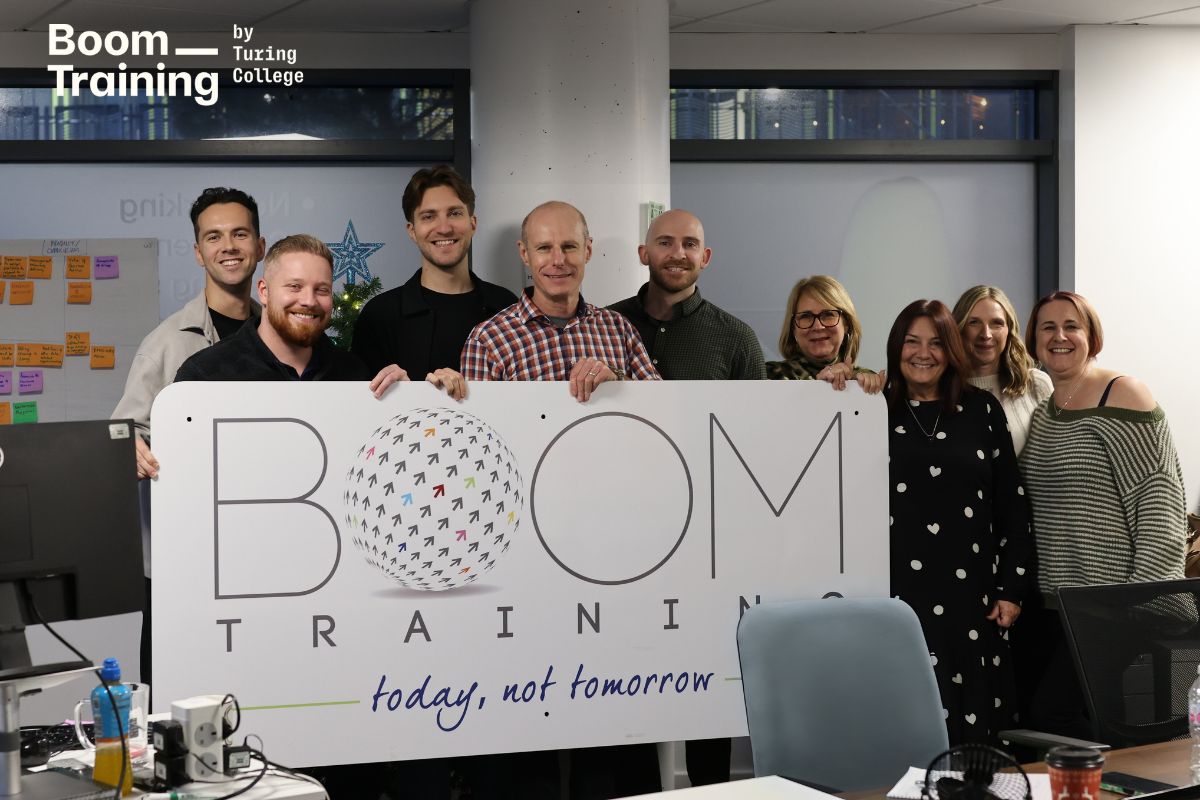Robot skin and “x-ray vision” software for surgeons among British innovations showcased to investors

- Leading investors gathered to hear pitches from top British entrepreneurs at the Enterprise Hub Annual Showcase
- Dame Ann Dowling, President of the Royal Academy of Engineering, calls for greater support for UK entrepreneurs
The Royal Academy of Engineering’s Enterprise Hub hosted its sixth Annual Showcase last night at Prince Philip House in London (Wednesday 08 May). The evening brought together some of the UK’s most exciting technology and engineering entrepreneurs behind inventions such as Wootzano’s electronic skin for robots and Innersight Labs’ medical imaging technology that allows surgeons to see inside the body in 3D.
14 Hub Members were given the opportunity to pitch to Britain’s leading engineers and investors. Entrepreneurs who have received training, advice and guidance through the Enterprise Hub typically go on to great success, with last years’ cohort receiving follow on funding of £33 million (a combination of equity and grant funding) between December 2018 and May 2019.
Professor Dame Ann Dowling OM DBE FREng FRS, President of the Royal Academy of Engineering, commented:
“UK engineering leads the world in creativity and innovation, yet too many early-stage engineering businesses fail to unlock the support required to reach their full commercial potential. Starting a business is hard work, and can be a lonely endeavour. One of the many benefits of the Enterprise Hub is the community of peers and industry leaders entrepreneurs have access to; to guide them through these challenges and help them develop the skills they need to succeed. However, government, industry and the investment community also have an important role to play in supporting the UK’s entrepreneurs, ensuring that the most promising innovations are commercialised for the benefit of wider society.”
Since 2013, the Enterprise Hub has supported more than 40 SMEs and over 100 entrepreneurs, helping to develop ideas into investable, high-growth companies. To date 75 high growth start-ups have been established generating over 400 jobs in fields ranging from artificial intelligence to healthcare technology.
Tony Purnell FREng, Head of Technology for British Cycling, who spoke at the event last night, commented:
“Creating a successful enterprise requires a competitive edge. It involves much more than just raw talent; entrepreneurs require coaching, iteration and a great deal of persistence. I know from experience that the UK is one of the best places in the world to start and grow a business. As an engineering community we must pull together to support innovative ventures that have long-term potential, helping them scale up their world-class ideas into world-leading businesses.”
The 150 guests at last night’s event included the UK’s leading engineers, and investors. The evening provided a platform for the entrepreneurs supported by the Enterprise Hub to attract backing for their business ventures. It is the culmination of more than a year’s support from the Enterprise Hub, helping those with engineering ideas to develop the skills and confidence to take their business to the next level.
Ian Shott CBE FREng, Chair of the Royal Academy of Engineering Enterprise Committee, added:
“This year’s presentations have clearly demonstrated that entrepreneurial spirit is alive and well in engineering. We founded the Enterprise Hub six years ago to connect exceptional engineering entrepreneurs with the Academy’s global network of exceptional engineers, business leaders and investors, to ensure entrepreneurs have the necessary skills and contacts to successfully start up, scale and grow their businesses. Bringing together the brightest and best in British engineering, organisations such as the Enterprise Hub plays an important role in catalysing and nurturing a culture of enterprise and extending the UK’s reputation for world-class innovation and impact.”
Those bidding for support at the Annual Showcase included:
Sheana Yu, Founder and CEO, Aergo (London)
Aergo is postural support seating for young wheelchair users. Aergo’s cost-effective solution has an expandable frame that grows in width and depth to support users long-term. The system is pressure-sensitive and adjusts by inflating and deflating a network of air cells when the user moves, giving them greater comfort and independence.
Dr Ilan Adler, CEO, EcoNomad Solutions (London)
EcoNomad delivers small scale technology for sustainable resource management and agricultural waste reduction. Its sustainable, affordable technologies enable waste recycling and management, empowering smallholding farms and rural communities to be more self-sufficient. EcoNomad Solutions Ltd has developed and refined a suite of technologies, including biogas and nutrient recovery systems, known as the BioNomad™, that can be used on small farms to turn agricultural waste into biofuels for heating and an enriched liquid fertiliser.
Dr Li Ping Lu, CTO, G-PLED Technology (Exeter)
G-PLED Technology have used graphene to create an ultra-thin, flexible and transparent material known as GraphExeter. The material has a distinctive combination of properties – it is as conductive as metal and as flexible as plastics. This creates new possibilities for advances in electronics in areas such as flexible lighting, foldable screens and other display technologies that are increasingly in demand to support advances in electronic technologies.
Dr Kitty Liao, Founder and CEO, Ideabatic (London & Cambridge)
During ‘last mile’ journeys, vaccines can be exposed to temperatures that are too high or too low, meaning they arrive damaged. Ideabatic combats these issues with SMILE, a smart last-mile vaccine cooling system. It helps to preserve vaccines so that they remain effective in the last few miles of delivery and arrive safely.
Dr Eoin Hyde, CEO, Innersight Labs (London)
Innersight Labs is a 3D modelling technology that can be used by surgeons to improve operative planning. Using standard-of-care CT and MRI scans to create high-quality, 3D models of a patient’s anatomy, surgeons then use the models to plan surgeries and visualise potential risks.
Dr Mihai Caleap, CEO, Metasonics (Bristol)
Metasonics’ new technology can focus, sculpt and direct soundwaves in real time, bringing enhanced control and new functionality to sound. Just as a projector transforms a single light beam into a vast and varied image, Metasonics can make a single speaker sound like hundreds of individual speakers. It is a cost-effective, compact and scalable solution with the potential to disrupt a range of sectors, including building and architecture where it can be used for effective sound insulation, medical therapies for non-invasive imaging and the automotive sector where it can improve comfort and sound insulation inside a vehicle cockpit.
Dr Amber Hill, CEO, Research Grid (London)
Research Grid aims to disrupt the market for patient and public involvement and engagement (PPIE) that is essential for healthcare researchers and institutions. Approximately £6.3 billion is spent each year in the UK and USA on healthcare research and development (R&D) that requires PPIE. However up to 72% of funding applications are rejected for not meeting PPIE standards such as lacking in overall research quality or methodology that patient/public insights could have improved. Research Grid has developed software to streamline PPIE activities and quantify its impact in healthcare R&D. It supports researchers and institutions with tools to create, manage and implement the delivery of PPIE activities that save money, increase efficiency, and improve research.
Dr David McKee, CTO, Slingshot Simulations (Leeds)
Slingshot Simulations aims to make simulation and data analytics more accessible to businesses looking to transform and optimise, through its user-friendly simulation service. The automated, integrated cloud-based service is a fast, cost-effective route to accurate simulation. Slingshot uses a patent-pending optimisation technique for automated analysis of big data. The technology is based on over a decade of research and development, done in close collaboration with industry. It can quickly handle large amounts of data to create real-time simulations for use in forecasting and analysis.
Dr Tian Carey, Managing Director, Textile Two dimensional (Cambridge)
Textile Two Dimensional makes electronic inks using graphene, which can be printed directly onto textiles. These inks can be layered to create bespoke, functional and wearable electronics. The electronics, and graphene’s electrical and thermal conductivity properties, are integrated into the textiles while remaining flexible and washable. They are comfortable to wear and can be re-used several times, so they are cost-effective and environmentally friendly. The company is working closely with end-product manufacturers to explore development for a range of smart wearables in areas such as personal health, fitness and wellbeing, protection and fashion.
Dr Jonathan Siviter, Managing Director, Thermoelectric Conversion Systems (Glasgow)
Thermoelectric Conversion Systems (TCS) has identified a major and growing problem worldwide: the failure of internet and electronic communications caused by data centres and other electronic equipment overheating. To help combat this problem, TCS has developed next-generation cooling technology for these systems that is less reliant on ambient air, reducing the likelihood of overheating failure in high ambient temperatures.
Dr Pae Natwilai, Founder and CEO, TRIK (London)
TRIK is an enterprise software solution that enables drone photography to be used efficiently for structural inspection. It automatically turns drone photo feeds into an interactive 3D model, which can be measured and annotated. The 3D model created also doubles as a database allowing users to search for photos, draw additional data, detect structural changes and create maintenance projects directly from our platform.
Dr Alexander Patto , Co-Founder and CEO, WaterScope (Cambridge)
WaterScope have created an easy-to-use, bacterial testing system for water. Current water testing equipment is bulky, expensive and takes at least a day to provide results. WaterScope’s technology is inexpensive and can identify specific bacterial micro-colonies in less than six hours, four times faster than current tests available. The technology is easy to use away from laboratories and does not require the end user to be highly trained.
Dr Atif Syed, Founder and CEO, Wootzano (Edinburgh & Sedgefield)
Wootzano Ltd is an electronics company with a patent-pending process for developing an electronic skin for robots. Known as Wootzkin, the world’s first commercially available technology enables robots to sense and feel as humans would, allowing robots to complete dextrous jobs more easily. Wootskin can bend, stretch and twist without damaging the sensor it uses to measure force, pressure, temperature and humidity.
Tara Massoudi, Business Development, Zyba (London)
Zyba has developed CCell, a technology that uses wave energy to create artificial coral reefs. This can provide a long-term, ecological solution to coastal erosion, restoring fisheries and enhancing tourism in the process by creating new scuba dive sites. CCell technology is an ultra-lightweight energy converter that uses ocean waves to generate electricity. This is used to power BioRock – a process of electrolysis that makes sea minerals form around a steel structure, effectively creating a reef. The process enables corals to grow up to five times faster than they would naturally.
Notes to editors
For further information please contact the Enterprise Hub press office at Good Relations on enterprisehub@goodrelations.co.uk
About the Royal Academy of Engineering and Enterprise Hub
Enterprise Hub – The Royal Academy of Engineering’s Enterprise Hub is a national resource for the UK’s most promising engineering entrepreneurs. The Hub forms part of the Academy’s commitment to stimulate excellence and promote creativity and innovation in engineering. The Hub does this by making awards to exemplars of excellence and innovation in engineering who will be the founders and leaders of tomorrow’s high-tech companies. The awards include provision of money-can’t-buy bespoke support and one-to-one mentoring from its Fellowship, which comprises many of the country’s most successful engineers from across academia and industry, including prominent entrepreneurs and business leaders such as Mike Lynch OBE FREng, Sir Robin Saxby FREng, Anne Glover CBE HonFREng and Ian Shott CBE FREng. The Royal Academy of Engineering opened the Taylor Centre – a physical home for the Enterprise Hub with meeting and networking facilities for its Members – in February 2017.
Royal Academy of Engineering
We bring together the most successful and talented engineers from across the profession – our Fellows – to advance and promote excellence in engineering for the benefit of society.
We have three strategic priorities:
- make the UK the leading nation for engineering innovation and businesses,
- address the engineering skills crisis, and
- position engineering at the heart of society.
We are a national academy with a global outlook.











Responses